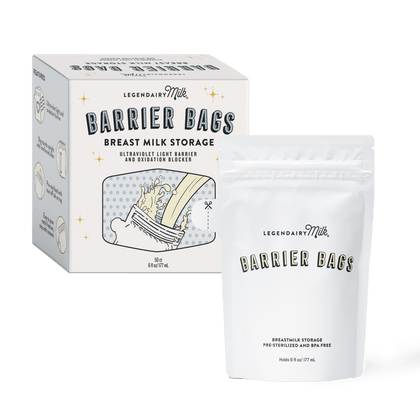Many parents use bottles at some point, whether just for the occasional night out or because they will be returning to work, and send their pumped milk bottles for the caregiver to feed the baby. But what do you do if your baby refuses to take the bottle? Have you tried to give your baby a bottle, and they are just not having it? Getting your baby used to a bottle can be very stressful when they refuse. Don’t worry; there are strategies to help you when your baby has bottle refusal. Also, remember that what your baby does or doesn’t do gives you clues into how well they are able to feed and challenges with it. (3) It can take some experimenting and diving deeper into why they are having a hard time, but when you uncover the why, it often holds the solution for how to help them.
Babies use different muscles when they nurse compared to how they drink from a bottle.
- For nursing, a baby opens their mouth wide with their tongue coming out over the bottom gum line, and the tongue draws the nipple and a portion of the areola tissue into the mouth. Their lips flange and form a seal on the breast. The tongue needs to be able to remain extended, cup the breast tissue, and move in a wave-like motion to transfer milk from further back in the ducts toward the nipple, as well as help create suction.
- At the bottle, a baby uses their tongue differently, which helps control the flow of milk. Instead of a wave-like motion, we see a movement more like a piston firing forward and back with the back of the tongue rising and thrusting forward. (1)
- Bottle nipples differ in shape, flow, and firmness. Choose a bottle nipple that supports your baby’s oral abilities. While helpful general guidelines exist, each baby is different and may require a nipple with features to match their abilities.
- Use a slow-flow nipple. There is no need to graduate to a faster-flow nipple as our baby gets older.
- A nipple that has a gradual slope from the nipple to the shoulder base allows your baby to have a wider latch at the bottle instead of pursed lips used with a shallow latch.
- Do not fall for clever marketing of “closest to breast” labels on the bottle packages.
- Do start with the bottle touching your baby’s chin before their lips. This supports them opening their mouth wide rather than slurping the nipple in or feeling like it is being pushed into their mouth.
Give your baby a teething toy between nursing or trying the bottle. It helps strengthen their tongue muscles. They will use their tongue in different ways, like moving it side to side, sticking it out, and pushing against parts of the toy.
- Start with just a small amount of milk in the bottle - an ounce at first, and then you can give more next time.
- Celebrate success - any step towards being more comfortable and accepting of the bottle, even if there is no milk in it yet, deserves to be celebrated. It is hard work, and you are both figuring it out.
- Ask your baby to take a bottle by following the same reflexes they use for breastfeeding. Start by placing the bottle nipple base on the chin, and when they open their mouth, the bottle can be brought into their mouth. It will be horizontal to the floor with milk in the tip of the nipple but not filling the entire nipple.
- Feed using paced side-lying feeding - this gives your baby the most control over feeding at the bottle. (2)
-
If your baby is 4 months or older and bottle feeding is still challenging, consider trying a cup or straw cup, like the Legendairy Milk Honey Bear Straw Cup, to give milk. Instead of a sippy cup, an open cup can be used, supporting proper tongue posture and swallowing. Start with a small heavy-bottomed cup (think shot glass) and fill it with your milk. When the cup has less milk, it is more likely to spill because it needs to be tipped further for the milk to reach their mouth. When the cup is more full, they do not need to tip it very much at first to get milk.
- Patience and practice make perfect. If your baby has been refusing the bottle, getting comfortable and accepting the bottle won’t happen overnight. Practice at least once per day around the same time each day. Being consistent helps.
If your baby still has difficulty taking a bottle after trying these strategies, more may be going on. Get in touch with your IBCLC (International Board Certified Lactation Consultant) to take a deeper look at what the root of the issue may be. They can also help co-create a care plan specifically for your baby, their feeding needs, and your goals.
Bottle refusal can be a challenging situation for both parents and babies. Understanding the differences between breastfeeding and bottle feeding can help bridge the gap and make the transition smoother. By implementing strategies such as choosing the right bottle nipple, offering the bottle at the right time, using distractions, and practicing patience, parents can help their baby become more comfortable with bottle feeding. However, if the problem persists, it is advisable to seek assistance from an IBCLC who can provide further guidance and support tailored to your baby's specific needs and feeding goals. Remember, with time, patience, and persistence, your baby can overcome bottle refusal.




